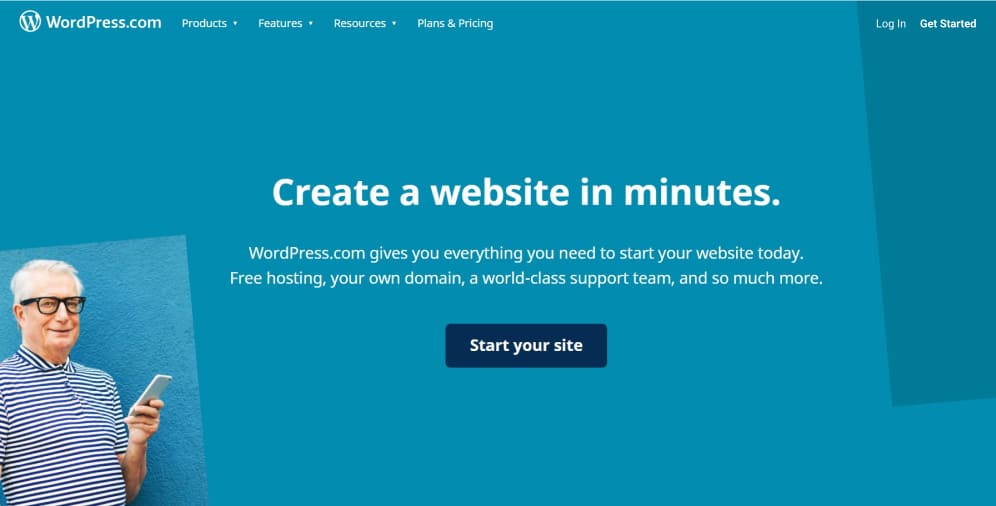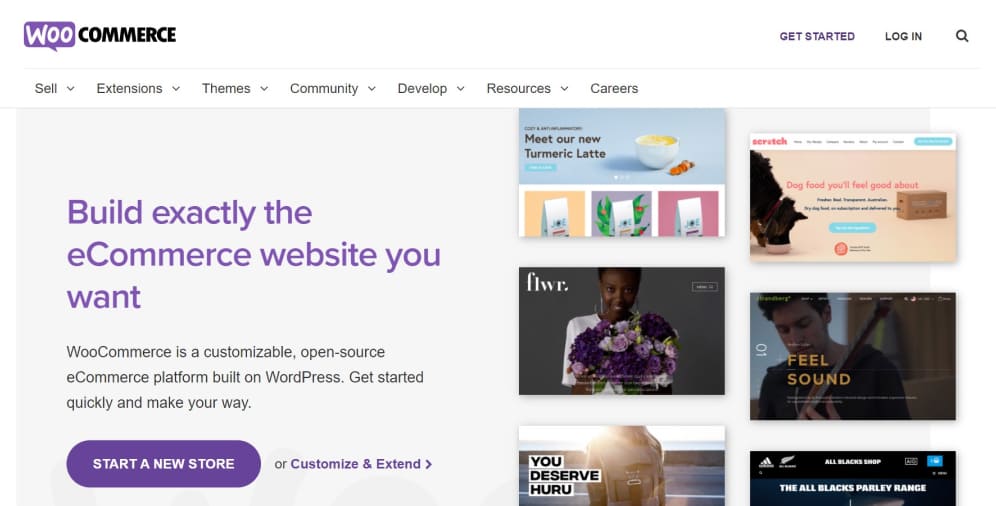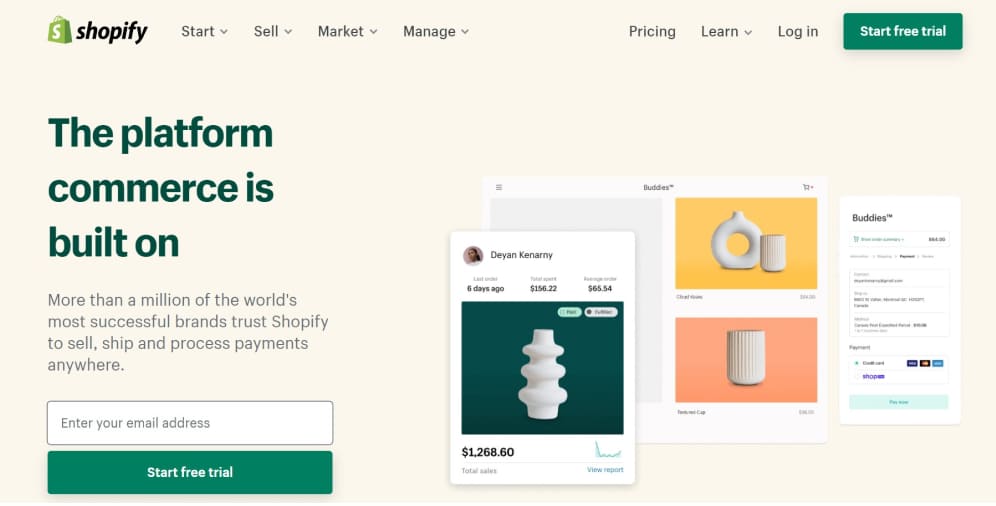Outline:
How to attract and retain visitors to your website? One effective way is by incorporating value-adding elements such as content, images, videos, and graphics, which also earn favor with search engines.
Once you have created such content, the next step is to publish, manage, update, and distribute it to users online. This can be a time-consuming task, especially for larger websites, which is where content management systems (CMS) come in handy.
A CMS is a software application that simplifies content creation, editing, and publishing processes, allowing you to focus on generating quality content that appeals to your audience. It’s essential to choose the right Content Management System for your website as it can greatly impact your productivity and efficiency. In this article, our headless CMS agency will delve into the definition, types, and its importance to your business.
CMS: The Essential Tool for Website Creation and Management
The Content Management System is a powerful tool that enables users to manage website content efficiently. This platform allows users to create and publish posts, modify the design, add widgets and functionalities, and edit various elements of the website. Essentially, CMS simplifies the entire process of website creation and management.
One of the major advantages of CMS is that it eliminates the need for a team of professionals to manage website content. With just one person, even without extensive programming skills, it is possible to add new sections or publish new items on the website. The simple and user-friendly interface of the CMS makes it easy for anyone to interact with the platform without any issues.
While it is possible to create a website manually, using CMS is more efficient and cost-effective. That’s why many companies opt for a Content Management System when creating and managing their websites.
CMS 101: Exploring the Various Types of Content Management Systems
There are several types of CMSs available, each designed to cater to different needs and preferences. Here, we will discuss five main types of CMS platforms:
Open-Source CMS:
Open-source CMS platforms are free to use, modify, and distribute. They are built and maintained by a community of developers who contribute to the platform’s growth and improvement. Some popular open-source CMS platforms include WordPress, Joomla, and Drupal. These platforms offer a wide range of themes, plugins, and extensions that can be used to customize a website to meet specific requirements.
Commercial CMS:
A proprietary CMS is a licensed software that requires users to pay for its use. These platforms are developed and maintained by a specific company, and users have limited ability to modify or redistribute the software. Examples of proprietary CMS platforms include Adobe Experience Manager, Sitecore, and Kentico. Proprietary CMSs usually come with dedicated support and frequent updates but may be more expensive than open-source alternatives.
SaaS CMS (Software as a Service):
A SaaS CMS is a cloud-based platform that is hosted, maintained, and supported by a service provider. Users pay a subscription fee to access the software, which typically includes hosting, security, and software updates. Examples of SaaS CMS platforms include Wix, Squarespace, and Shopify. SaaS CMS platforms are user-friendly and require minimal technical knowledge, making them an excellent choice for small businesses and individuals who need a straightforward solution for managing their online content.
Headless CMS:
A headless CMS is a back-end content management system that delivers content via APIs to any front-end system or device. This decouples the content management from the presentation layer, allowing developers to build the front-end with any technology they prefer. Examples of headless CMS platforms include Contentful, Strapi, and Sanity.io. A headless CMS is an excellent choice for businesses looking to develop a custom website or application that utilizes content across multiple platforms, such as mobile apps, IoT devices, or digital signage.
Headless CMS vs. Traditional CMS
Now, when you know the main types of CMS, it’s time to delve deeper and explore two distinct approaches to content management: Headless CMS and Traditional CMS. Understanding the differences between them is vital for coming up with a smart decision, which will save you time and money. Let’s compare Headless CMS and Traditional CMS based on their architecture, functionality, and use cases.
#Architecture
- Headless CMS: A Headless CMS is designed with a back-end content management system and a separate front-end presentation layer. The back-end and front-end communicate via APIs (Application Programming Interfaces), allowing content to be delivered to any device or platform. This separation of concerns results in a more flexible and modular architecture.
- Traditional CMS: In a Traditional CMS, the content management system and presentation layer are tightly coupled. The back-end stores and manages content, while the front-end is responsible for displaying the content in a specific format. This monolithic architecture is less flexible and can limit the adaptability of the system.
#Functionality
- Headless CMS: Since a Headless CMS focuses solely on content management, it provides a more streamlined and efficient way to create, store, and deliver content. The front-end can be built using any technology stack, providing greater flexibility for developers. Moreover, a Headless CMS allows for easy integration with other systems and services via APIs, making it suitable for multi-channel content distribution.
- Traditional CMS: A Traditional CMS provides an all-in-one solution for both content management and presentation. Users can create, edit, and manage content through a WYSIWYG (What You See Is What You Get) editor, making it user-friendly for non-technical users. However, the tight coupling of content and presentation can make it challenging to adapt the front-end for different devices, platforms, or technologies.
#Use Cases
- Headless CMS: A Headless CMS is an ideal choice for projects that require content to be delivered across multiple platforms (websites, mobile apps, IoT devices, digital signage, etc.) and in different formats. It’s also suitable for businesses with specific requirements for their front-end technology or those looking to build a custom website or application.
- Traditional CMS: A Traditional CMS is well-suited for small to medium-sized businesses or individuals who need a straightforward, user-friendly solution for managing their website content. It’s particularly useful when the primary focus is on creating and maintaining a single website with a consistent design and presentation.
In conclusion, the choice between a Headless CMS and a Traditional CMS depends on the specific needs of a project. If flexibility, multi-channel content distribution, and customizability are priorities, a Headless CMS may be the better choice. On the other hand, if ease of use and an all-in-one solution are more important, a Traditional CMS could be more suitable. Ultimately, understanding the differences between these two types of CMS platforms will enable businesses and individuals to make informed decisions about the best content management system for their unique requirements.
Website Creation: Choose Your Path – Manual Programming, CMS, or Framework
In general, when it comes to creating a new website, there are three main options available:
- Creating it from scratch using a programming language. This option is usually chosen by companies that have the necessary resources, as building a website manually can be time-consuming and expensive.
- Developing it using a CMS. This option is ideal for businesses that want to create and launch their websites quickly without needing to hire technically skilled professionals with relevant knowledge.
- Making it on the basis of a framework. This option is less well-known but can be a viable alternative to CMS. A framework is a pre-built structure that includes pre-existing libraries, components, and other functionalities to help developers build websites more efficiently. The main difference between a framework and a CMS is that a framework is less opinionated, meaning it gives developers more control over the website’s development process.
Frameworks can be a good choice for companies that require a custom-built website with unique features that aren’t available in a pre-built CMS. However, frameworks require more technical expertise and development time compared to using a CMS. Therefore, companies need to weigh the pros and cons of each option before deciding which approach is best suited to their specific needs. We’ll do it for you.
Framework vs CMS: Which is the Right Choice for Your Business
As we have discussed, CMS is a platform that allows users to develop a website quickly and easily using pre-existing templates. On the other hand, a framework is a set of libraries that offer necessary functionalities to create custom-built websites.
If a project is relatively standard, then CMS is the most suitable approach since it already has all the necessary modules and built-in processes that meet the expectations of most users. CMS offers many advantages, such as a large number of templates, pre-existing functionalities, and modules for expansion, simplicity and speed of website creation, convenient administrative panels, and the ability to delegate certain functions by splitting access rights. However, it has some disadvantages, such as difficulties in introducing unique features and the potential for overloading with basic functionality, which may impact platform speed.
If a project vision does not fit into the capabilities of CMS, then using a framework is the best decision. Frameworks offer advantages like platform flexibility that allows companies to bring any idea to life, high website performance, and availability of ready-made packages and libraries to speed up the development process. However, frameworks require a significant amount of time for development since functionalities are built from scratch, and deep knowledge of programming and website building is necessary to work with them.
Choosing between CMS and framework depends on project goals, time and material costs of development and maintenance, and whether a company requires a standard or custom-built solution. For most standard solutions, specialized CMS will suffice, while for the development of a unique high-level product, frameworks are better suited.
Benefits of a Content Management System
Modern CMS platforms are widely used as having an optimized website is essential for any company entering the online world. Therefore, they utilize various CMS to create websites with a standard set of features. Let’s explore the reasons why CMS is a popular choice for website creation and management.
Firstly, CMS offers fast website development, as users can work with pre-designed websites and customize them to their requirements. This results in a shorter development time compared to building a website from scratch. This is crucial as the sooner the website is ready, the sooner it can start generating income for its owner.
Secondly, CMS offers a wide selection of extensions, modules, and plugins that users can utilize to enhance the functionality of their website. These tools allow users to customize their websites according to their preferences and integrate it with other solutions such as shipping and payment gateways. Popular CMS platforms have a large number of available extensions created by developers, which helps improve the functionality of the website.
Thirdly, CMS platforms are designed with search engine optimization (SEO) in mind. They provide users with features like metadata, title and description tags, and custom URLs, all of which are valued by search engines. Additionally, a good CMS provides easy-to-use tools for adding and editing these elements, making it easier to optimize the website for search engines.
Finally, CMS makes it easy to update and modify website content, design, and architecture. The user-friendly interface and built-in management tools make it easy to make changes, like adding new menus or headers, which would be challenging and time-consuming if the website were built manually.
Now that we have explored the core CMS concepts, let’s move on to understanding the principle of its work.
Understanding How Content Management Systems Work
Once again, a Content Management System is designed to simplify the process of creating, managing, and maintaining content on a website. It provides a user-friendly interface for users with little or no technical expertise in web development. The primary function of a CMS is to separate content creation and management from the technical aspects of website design and development.
Here’s a step-by-step overview of how a CMS works for a website:
Installation and Setup
To use a CMS for your website, you first need to install it on a web server, either on your own hosting server or through a hosting provider. During the setup process, you’ll configure the database and basic settings, such as site title, URL structure, and admin login credentials.
Template Selection and Customization
After installation, you can choose a pre-built theme or template that defines the layout, colors, fonts, and other design elements of your website. Most CMS platforms offer a wide range of free and premium themes that cater to various industries and styles. You can further customize the chosen theme to match your brand identity and specific requirements.
Content Creation
CMS platforms come with a built-in text editor or visual editor, which allows you to create and edit content directly within the platform. You can create different types of content, such as blog posts, web pages, or product listings, and organize them using categories and tags.
Media Management
A CMS also provides a media library for managing images, videos, and other multimedia files. You can upload, store, and organize these files within the platform and easily embed them in your content.
Plugins and Extensions
CMS platforms offer a variety of plugins and extensions to enhance the functionality of your website. These can range from SEO tools and contact forms to e-commerce solutions and social media integration. By installing the necessary plugins, you can tailor the website to meet your specific needs and preferences.
User Management
A CMS allows you to manage multiple users with different roles and permissions. You can assign roles such as administrator, editor, author, or contributor to control access to specific features and content.
SEO and Performance Optimization
Most CMS platforms come with built-in SEO tools that help you optimize your content for search engines. This includes features like customizable URL structures, meta tags, and sitemaps. Also, you can install plugins or extensions to further optimize your website’s performance, such as caching and image compression.
Content Publishing and Updating
Once your content is ready, you can publish it on your website with the click of a button. The CMS will automatically update the website’s front-end to display the new content. You can also schedule content to be published at a specific date and time or make updates to existing content as needed.
Maintenance and Security
A CMS typically includes regular updates and security patches to keep your website secure and up-to-date. It’s crucial to ensure that your CMS, themes, and plugins are always updated to the latest versions.
The Ultimate Guide to Choosing the Right CMS for Your Business
Now that we understand the steps involved in building a website using a CMS, it’s important to know how to choose the right CMS for a specific type of business.
The first step is to decide on the company’s CMS vision. Each CMS has unique features and functionalities designed for specific purposes. Therefore, companies should determine their needs and goals as the basis for choosing a platform that aligns with their functions, tools, and other crucial elements.
The next step is to understand the features of different CMS platforms that match the company’s needs and goals. For instance, if the company wants to create an online shop, then features such as integrated payment systems and multi-currency support will be essential.
When considering a CMS, companies should also think about the cost. While many CMS platforms are free or have free versions with limited functionality, companies may need to pay a certain amount of money to access the full range of features and functions that the platform offers.
Lastly, companies should determine their budget for the project, considering the costs for development, support, and updates. Once the required calculations are done, companies can sum up the results and draw up a budget.
Smart CMS Selection: Key Features to Consider
Additionally, when choosing a CMS, it’s important to consider the features that the platform offers to ensure that it meets the company’s needs and goals. Below are some of the essential features that any good CMS should have:
Security
Security is crucial when it comes to website management, and any CMS should provide its users with adequate security measures. While vulnerabilities are common in any CMS, developers regularly release updates to eliminate them, making it crucial for users to keep their CMS updated.
Multilingual Functionality
For companies that operate globally, multilingual functionality is vital, as it allows users to switch between languages for a better understanding of the content.
Distributing Content
A good CMS should enable users to distribute their content effectively and provide all modern options, including virtual and augmented reality, to keep up with the ever-changing technological landscape.
SEO Tools
A CMS should have a range of SEO tools to enhance website visibility and performance. These tools include the adjustment of meta tags, creation of clean URLs, XML sitemaps, setting up 3xx redirects, and fast page loading speeds.
Fast Customer Support
Prompt customer support from CMS specialists is crucial, especially for non-technical users. Therefore, companies should consider CMS platforms that provide fast customer support.
Responsive Mobile
With the majority of internet entries being made via mobile phones, companies should ensure that their CMS provides an option to adapt the website content to smaller screens of gadgets.
By considering these features, companies can choose a CMS that aligns with their needs and goals and ensure a smooth website operation. Ignoring these features may lead to difficulties in managing the website and negatively impact its performance.
The Best CMS Examples for Website Creation: Our Top 5 Selection
We believe that now you’re ready to get acquainted with bright examples of CMS. Let’s get started:
01 WordPress
WordPress is the leader among free content management platforms. A great number of websites are made on this CMS. Initially, it was created for blogs, but over some time, its functionality has expanded allowing its users to build various commercial websites.
The system impresses with its simplicity of website creation and management along with thousands of plugins and templates that enable companies to make almost any project.
An easy installation process, a user-friendly administrative panel, a large community of users, and hundreds of guidelines for working with the platform are among its great advantages.
However, when it comes to disadvantages, then we should mention that some third-party plugins may be incompatible with each other, and if there are too many of them, it can affect the working speed of the CMS. Moreover, this CMS is open source (the code is open to the public) and if users install unverified modules or plugins, there is a high risk of hacker attacks. That’s why companies should ensure proper control over the security of their websites.

02 WooCommerce
First of all, WooCommerce is a plugin that is powered by the WordPress CMS, which implies that it’s provided for free. This CMS allows users to create full-fledged and high-quality websites without the knowledge of website development. As of today, this CMS has become one of the most popular tools for building e-commerce websites.
Its pros include the ability to adapt the websites to mobile devices and a high level of search engine optimization since by building the website here, users get a fast loading solution with optimized database operation, support of many plugins, and other useful tools.
Among the cons of the platform, it should be noted that it’s impossible to build, for example, an online store, for free as long as you need to pay at least for hosting and domain. Plus, together with free plugins and modules, WooCommerce also provides paid ones that may ideally fit the needs of the website. So in this case, you will have to pay for them.

03 Shopify
Shopify is a platform that helps its users to develop and launch their own online stores, as well as to maintain its successful operation. It was created for users without any advanced design or technical skills as long as it provides the simplest functionality and a wide range of templates that enable them to quickly and easily create and manage websites of any complexity.
While working on this CMS, businesses have no reason to worry about the technical side since the platform offers everything they need, including the software, hosting, SSL certificate (which will encrypt data and transmit it over a secure communication channel), etc.
Unfortunately, the platform doesn’t offer free plans. Nevertheless, it provides users with a free 14-day trial period during which users may check all the features and functions available here. If at the end of this period, users decide that this CMS is suitable for them, they will be suggested four main pricing plans, ranging from $9 to $299 per month.

04 Squarespace
Squarespace is a SaaS (software as a service) platform with which users can create websites without knowledge of CSS, HTML, and other markup and programming languages. The platform is pretty universal, which means that here users may build effective websites from scratch or on the basis of ready-made templates (either free or paid).
On the plus side of the CMS, Squarespace provides companies with a full set of marketing tools to ensure a great interaction with the audience and attraction of new customers. In addition, each website template has in-built integration, so there’s no need to look for other applications or additional plugins.
As for the payment, the platform offers a 14-day trial version in order to test all the system capabilities. But then, users have to choose one of the paid versions (from $16 to $54 per month). Furthermore, the system provides a 30% discount if users decide to pay annually, which is quite the bargain.

05 Wix
Wix is one of the most famous e-commerce and website-building platforms that provides domain registration services. It allows users to create a website of any level and complexity in visual mode by simply dragging and dropping blocks. Here, a lot of attention is paid to the website appearance: themes adaptability and interface convenience, thanks to which users can create a quite unique website.
The advantages of this system are a large number of high-quality templates, an opportunity to configure the desktop and mobile versions of the website separately, a rich database of widgets, and a powerful SEO block for which an assistant has been developed. This assistant helps users to optimize their websites for efficient promotion in search engines.
Among its shortcomings, we can single out the fact that when utilizing the platform for free, users receive reduced functionality only, i.e. the company will not be able to connect its domain, and the website will display the system advertisement that can’t be turned off even on the cheapest paid version. The pricing policy here ranges from $4.50 to $24.50 per month.

The described platforms obtain quite significant differences in the proposed functionality. Therefore, before making the final choice in favor of a particular system, it’s necessary to conduct a thorough analysis so that the tasks set for the future website coincide not only with the system capabilities but also with yours.
On a Final Note
Overall, choosing the right content management system can make a significant difference in a company’s online presence. A properly selected CMS can help create a website with an amazing design, which can attract new visitors and potential customers. Besides, using a CMS to build a website can save companies both time and money.
While this article has covered the main aspects of content management systems, including their types and examples, some may still find the process of working with a CMS complex and challenging. In such cases, it’s always advisable to seek assistance from CMS specialists. Our team is always ready to help answer any questions or concerns that companies may have while working with a CMS.





